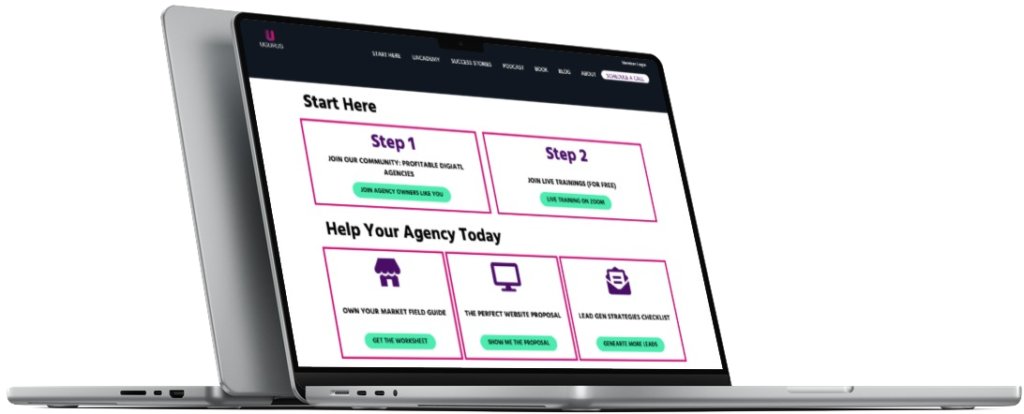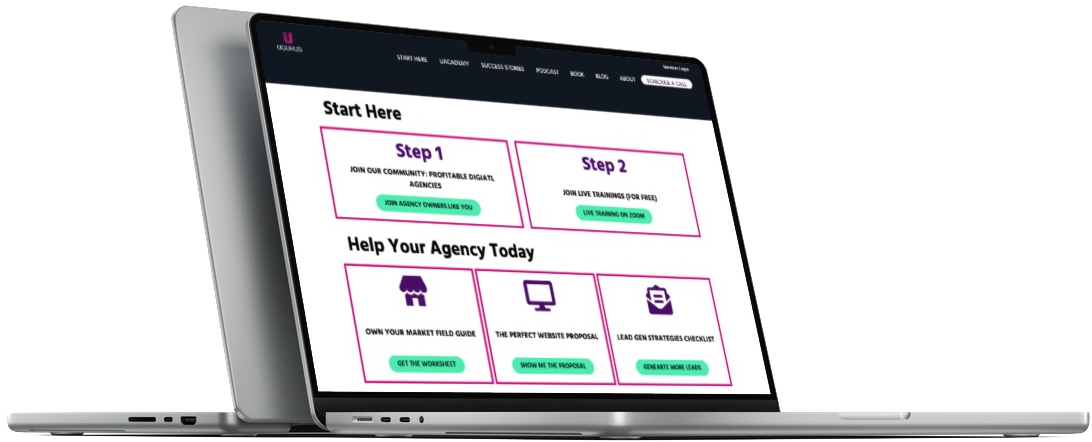Request for proposals, or more popularly called RFPs, have a bad name in the web business. I have fallen victim, on many occasions, to the roulette odds of chasing a BIG, JUICY, SWEET RFP opportunity down a black hole.
It’s tough.
On one hand, you get this nicely organized, lengthy document full of needs and requirements that screams OPPORTUNITY.
On the other hand, you are not alone…more than likely this same exact document was sent out to at least a dozen, maybe even a hundred, different companies.
So what do you do? Do you throw your hat in the ring? Or do you hit, “Report Spam?”
RFP Basics
According to Wikipedia, an RFP:
is a solicitation made, often through a bidding process, by an agency or company interested in procurement of a commodity, service or valuable asset, to potential suppliers to submit business proposals. It is submitted early in the procurement cycle, either at the preliminary study, or procurement stage. The RFP process brings structure to the procurement decision and is meant to allow the risks and benefits to be identified clearly up front.
Key phrase: “brings structure to the procurement decision.”
The goal of an RFP is to allow a company or organization to compare apples to apples. The idea is that if I do a bunch of work ahead of time to put together a document that outlines all of our needs and provide that document to a handful of different companies, in return, I will get a series of bids that can be compared to each other with relative fairness to find the best fit.
The goal is to find the best possible company for the cheapest price. Sometimes organizations might have different top priorities, but with most government agencies and non-profit organizations, budget is always a big consideration.
Unfortunately, the good intentions behind the RFP are rarely accomplished.
What usually happens is a bunch of companies burn countless hours creating a document that fits the exact requirements of the RFP, only to find out that the organization putting out the RFP already had a prior relationship with a firm, and they were just putting their feelers out for “due diligence.”
For bureaucratic groups, an RFP process is a tidy way to get a bunch of free market agencies to stand in line and march to a single drum beat. They want everyone to work through their process, not yours, in order to make a decision.
But the RFP objectives are simple and can be summarized:
- Compare apples to apples.
- Find a great company for the lowest price.
- Streamline the procurement process.
Are RFPs Good or Bad?
It might sound like I’m a little skeptical about RFPs so far, right?
Skeptical is a good word to describe my stance. But I don’t believe RFPs are inherently bad things. At the end of the day, getting an RFP is like getting any other kind of opportunity. And opportunities are always good.
But if you handle an RFP like you handle your other opportunities, you might end up wasting a lot of time.
I actually met my wife by responding to an RFP put out by Denver’s premier dance company, Colorado Ballet. Not only did I win the business, but I ended up marrying the organization’s Marketing Manager. How’s that for a good pitch?
I also won countless other RFPs. Some of which led to decade-long relationships that added up to some serious amounts of revenue for HotPress.
So whenever someone says, “I don’t respond to RFPs”—take note. They are basically saying, “I don’t respond to opportunities.”
When you put it in those terms, it’s hard to dislike RFPs.
Inherent Problems and How to Handle Them
Even though RFPs are just an opportunity, and not necessarily bad, they do have some problems that you need to be on the lookout for.
Poor Odds
Inexperienced managers in charge of a procurement process might want a “lot of options” and end up sending the RFP out to 100+ companies. On a couple of occasions, we won business from an RFP that was sent out to over a hundred web companies. When I found out about that, I was like “WHAT?” Glad I got the business, but kind of pissed that this organization wasted the time of ninety nine other firms.
Whenever I get an RFP, the first question I always ask is, “How many companies did you send this to?”
I want to know my odds right up front. While I might consider pursuing an opportunity with bad odds, I at least want to be conscious of the fact that I’m gambling.
Now it is important to make note that just because an organization sends an RFP to a lot of companies, it doesn’t necessarily mean that they will get a lot of responses. This is where you need to build up as much of a relationship with the procurement manager as possible. During the whole process keep tabs on how many companies are participating. It might turn out that throughout their process they eliminate a lot of options.
Preexisting Relationships
Unfortunately for a lot of other companies, I’ve had a preexisting relationship with an organization that was required to get at least three other bids on multiple occasions. This relationship gives me an unfair advantage in an RFP process. A lot of sales gurus will tell you to only pursue an RFP if you have a preexisting relationship–basically, an inside edge on everyone else.
I don’t prescribe to that hardline approach, but it is an important thing to know. My second question when responding to any RFP is, “Do you have an existing relationship with any firm you have sent the RFP to?”
Hopefully they are honest. On multiple occasions they have responded, “Yes, our agency of the last ten years is one of the companies.” If they were really trying to find a new company, they wouldn’t have sent the opportunity to their existing agency. So keep this in mind.
What you are trying to do with this question is simply vet out if they are buddied up with a company on the list. It’s not impossible to overcome this, but again, it affects your odds.
Predefined Process
Remember how the RFP process “brings structure to the procurement process?” In my view, that structure is almost always a bad thing for us as the web professional because it gets in the way of doing any real discovery. If you’ve gone through my Sales Kit, you know that I am a big proponent of spending a good deal of time up front with a customer before you engage in a website project or online marketing campaign.
RFP processes almost always try to rain on this parade.
Typically an RFP goes like this:
- Respond with intent to submit proposal by X date.
- Respond with initial RFP questions by Y date.
- Attend group meeting/conference call on Z date.
- Submit proposal by A date.
- First round follow up interviews will be scheduled by B date.
- Second round interviews will be scheduled by C date.
- Firm will be selected by D date.
How strict a procurement manager is will define a lot about how you can bend this process to your will during the sales process. I have typically found that the more you can get the RFP process to bend to your process, the more you will stand out as a winner in their list of companies. If everyone else plays by the rules and you are able to make a proposal that goes above and beyond to address their problems, you might just have the upper hand.
So when I get an RFP, I always attempt to keep the opportunity in my sales process, while making sure to hit all of their requirements.
I try to get a one-on-one meeting immediately. You can do this by cold calling the procurement manager, doing a bit of pre-qualification, and then simply scheduling your next appointment like usual.
Depending on their experience and intentions, they may or may not let this happen. But I’m upfront about my intentions, “I want to help you get the best project possible for your organization. And in order to do that, I need to work with you to do discovery. I really like that you put this RFP together for me, but if you want to truly leverage my expertise, I need to make sure everything you’ve put in this document is what I’d recommend.”
If they like the sound of that, then we are in business. Proceed with the usual sales process while hitting all of their requirements. By the end, you will have more interactions with the opportunity than any of the other competition, which will provide you with a leg-up in the relationship.
The more push back you get on trying to execute your process, the more red flags there are. If they aren’t willing to let me do what I’m good at, then it is usually a sign of things to come.
The exception is, of course, government. Government organizations are notorious for sticking to their process at all costs (even if it’s bad for the end result).
In these cases, it’s important to just give them what they ask for and know that you are simply rolling the dice. If you don’t do a lot of government bids, then I would suggest just passing. If you intend to go after government projects (which can be great long-term cash cows), you need to consistently bid on lots of projects. It’s really a numbers game until you build up a nest of great contacts and relationships. They aren’t going to let you execute your own process, so just work through theirs until you get a few deals.
Key Takeways
Remember, at the end of the day, RFPs are just another form of opportunity. Just like dealing with other types of opportunities, you may need to use a slightly different approach.
Keep in mind these main points:
- Know your odds and keep track of them as you progress through the process.
- Ask a lot of questions and get as much discovery in as possible (ideally through your own sales process).
- If they are unwilling to budge and mold to your existing sales process, take note, that might be your reason to eject.
If you have any specific questions about RFPs, definitely leave them in the comments below. I’d love to continue this discussion and hear about your experiences.
GET YOUR FREE AGENCY ACCELERATOR PACKAGE





